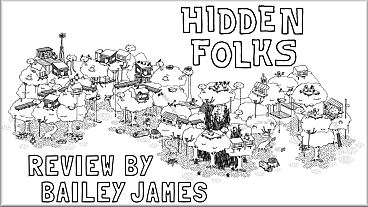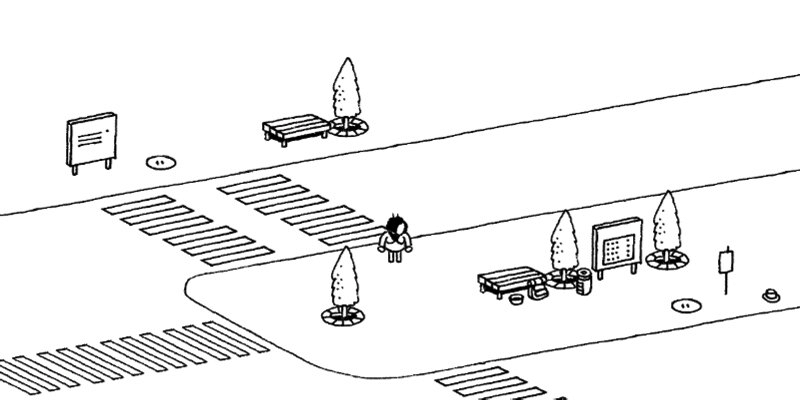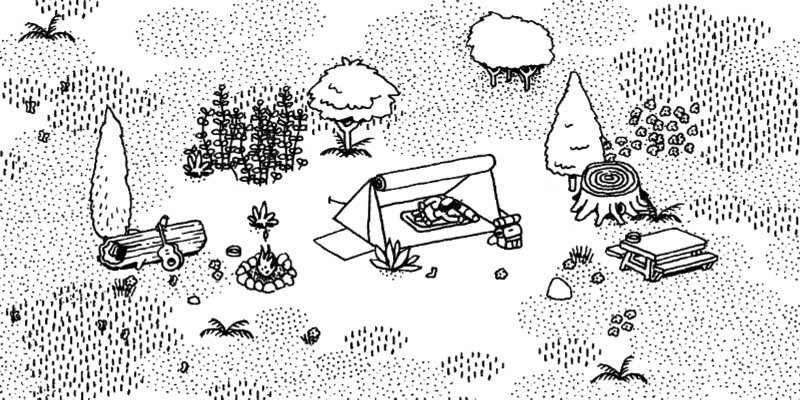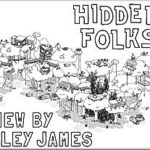
Hidden Folks Review
Hidden Folks uses visual creativity and ingenious sound effects to make a gameplay experience that is calming and amusing
Genre: Puzzle
Release date: February 15, 2017
Anyone who’s dipped a toe in the waters of casual gaming has probably played their fair share of hidden object games. Usually consisting of a static image layered with colorful and disparate objects, these games tasked players with finding things like antique shoes, artichokes, slide rules, elephants, and everything in between for some seemingly unrelated purpose like solving a crime. Normally there are time limits and point deductions for wrong clicks. These games often feel addicting and mildly stressful.
Developers Adriaan de Jongh and Sylvain Tegroeg eschewed all the traits of the genre when creating their intricate, lovely new game Hidden Folks. Their creation is more reminiscent of Where’s Waldo?, the children’s book series that tasks players with searching a large and vivid scene to locate the eponymous man in the red-and-white striped shirt. Hidden Folks uses visual creativity and ingenious sound effects to make a gameplay experience that is calming and amusing.
When you begin the game, you are first dropped into a small but bustling jungle scene, hand-drawn in black and white. These colorless illustrations would be difficult to stare at if they weren’t animated—butterflies flap and monkeys hop up and down waving their arms, wandering across the leafy scene. Start clicking on the scene and the real magic happens. Birds squawk, lizards flex their long tongues, and leaves rustle to the side to reveal characters lurking behind them.

The immediate pleasure is in exploring, poking the scene to see what it hides and what sounds it will make, but the goal of each of the game’s several scenes is to find a set of hidden folks and objects. Displayed along the bottom, each of these figures comes with a clue hinting at where they can be found. For example, if a clue in a city scene reads, “Is it a bird? Is it a plane? No! It’s Superfolk!” I’ll know to start looking high in the scene for what’s most likely a flying folk. It’s a clever way to keep players from getting frustrated while hunting for a small banana or lounging person in an expansive scene and also gives the game more narrative color.
The game gently introduces players to new concepts with tiny opening levels that let them practice new skills before dumping them into giant landscapes that require dragging and zooming to fully explore. The level design is equally forgiving—you aren’t expected to find every hidden object on the first pass through a scene. Each level has a certain number of items you need to find before you can progress to the next one, and I often found that I hit the target number just as I was becoming fatigued of scrutinizing the same picture. Coming back later to old scenes with fresh eyes later yielded new discoveries.

Perhaps the most ingenious element of Hidden Folks is its sound effects. Every one of them — and the game purports to have more than 900 — is a human vocalization made by the developers. Beeping cars, squawking birds, and muttering folks form a background soundtrack, while interactions yield other sounds (some of my favorites: a slurping noise that accompanied clearing away jungle vines, a curt “zip zip zip” whenever I rolled up a tent flap, and a groan of pain after ever poke of a cactus or crocodile). It’s an inventive choice that adds to the game’s distinctive flair and gives the scenes further dimension.
The developers deserve attention for their well-crafted and delightful diversion. They have succeeded in a kind of micro-storytelling, where each scene contains dozens of tiny details that suggests larger narratives. Rolling up a flap to reveal a tent full of butterflies. A folk wanders the desert, creates an SOS sign with rocks, and shelters in a cave. A run-down house in a suburban neighborhood has a ghost hidden behind its front door. Hidden Folks is a pop-up book of tiny enchantments that makes you wonder what the folks around us are doing behind their own closed doors.
|
+ Intricate hand-drawn scenes and characters
+ Animations make the pictures fun to look at and explore
+ Sound effects are well-done and funny
+ Game is well-designed and forgiving, giving it a relaxing energy
+ Lots of details and stories to discover – Fatiguing on the eyes after long stretches of play
|
 |
Processor: SSE2 instruction set support
DirectX: Version 9.0
Processor: SSE2 instruction set support
Storage:150 MB available space
Processor: SSE2 instruction set support
Storage:150 MB available space

Leave a Reply